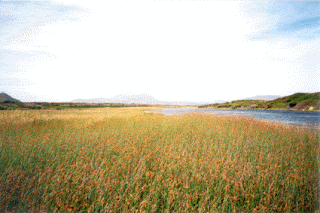RECONSTRUCTION OF PAST BIODIVERSITY
The fossil record is known to have both a biotic and an abiotic signature (Benton 2003), which basically means that the fossil record consists of both the parts that made up the living aspect, and those inert parts including the processes involved before and during fossilisation. Benton (2003) indicates that it has been argued that the distribution of the sedimentary rocks layers is actually responsible for fossil preservation and therefore the information interpreted from fossil diversification and extinctions is only that of artefacts. So, is the reconstruction of past biodiversity based on fossils alone as accurate as we would like to believe? Maybe fossils should just be seen as a piece of an ancient puzzle that merely states “I was here…”But there is more if you take a deeper look at the rest of the puzzle.
An interesting yet somewhat difficult to interpret paper on Peatlands as scientific archives of past biodiversity by Barber (1993) introduces peat bogs as sensitive investments of history. Peat bogs support a highly specialised fauna and flora and locked within them is evidence of the local environmental history from what is known as the Holocene epoch (Scott, Oxford & Selden 2006), which is present-day to about 10 000 years ago (Wikipedia contributors). Commonly, peat bogs are best known for their preservation of pollen which fell from various trees that surrounded the areas over thousands of years, and fossils of many different kinds of invertebrates (Scott, Oxford & Selden 2006). With the knowledge of past fauna and flora, an indication of the type of climate can be made, as well as the availability of water in past environments (Scott, Oxford & Selden 2006). According to Barber (1993), the characterisation and the detection of tephra (the volcanic ash record) not only can be used as time markers because of their obvious nature in position and time, but as confirmation of specific volcanic eruptions that are often reflected as narrow growth rings of trees as a result of the dust veil produced by the eruption and its effect on sunlight reduction, reducing subsequent annual tree growth. The detection of Tephra deposits in peat bogs in Ireland has linked the decline of pine forests in Scotland 4000 years ago to eruptions from volcanoes in Iceland (Barber 1993). The research being done hopes to provide information on the extent of the past forests which once covered large portions of Ireland and Scotland, and the conservation value of the Flow Country in Northern Scotland (Barber 1993). Did you know that we have our own peatlands here in South Africa? According to Peatlands Around The World (have a look at the following webpage supplied: http://www.ipcc.ie/wptourhome1.html), South African peatlands are quite rare. Examples of two peatlands as indicated by this website are the salt marshes at Langebaan National Park (image 1), and the wetlands at the Ramsar site at Baberspan (image 2).
 Image 1. Salt marshes at Langebaan.
Image 1. Salt marshes at Langebaan.
Image 2. Wetland, Baberpan.
Peat bogs also indicate that their present ecology is not necessarily an accurate portrayal of their ecological history (Barber 1993). The dominant species of peat moss itself is a clue to a changing biodiversity. Sphagnum imbricatum in some bogs is completely replaced by a different species S. magellanicum after the most recent glacial period, therefore indicating a change in the dependant species and indeed the change in climate and availability of water at that time (Barber 1993). A change in the most dominant species such as the Sphagnum spp. has dramatic repercussions for species which use it within the framework of their own existence.
 Image 3. Sphagnum peat moss.
Image 3. Sphagnum peat moss.
Barber K. E. 1993. Peatlands as scientific archives of past biodiversity. Biodiversity and Conservation 2: 474 – 489.
Benton M. J. 2003. The quality of the fossil record. Manuscript no. TTECO4 pp.66-90.
King D., Williams P., Salinger J. 2004. Reconstructing past environmental changes using speleotherms. Water and Atmosphere 12(2): 14 – 15.
Scott. A. G., Oxford G. S., Selden P. A. 2006. Epigeic spiders as ecological indicators of conservation value for peat bogs. Biological Conservation 127: 420 – 428.
Wikipedia contributors. Holocene [Internet]. Wikipedia, The Free Encyclopedia; 2007 Mar 1, 21:03 UTC [cited 2007 Mar 9]. Available from: http://en.wikipedia.org/w/index.php?title=Holocene&oldid=111911925.
Image credits:
Peatlands Around The World: http://www.ipcc.ie/wptourhome1.html accessed 9/3/07, 22:51.
Speleotherm: http://classes.yale.edu, accessed 9/3/07, 22:57
Wikipedia contributors. Sphagnum [Internet]. Wikipedia, The Free Encyclopedia; 2007 Mar 8, 14:18 UTC [cited 2007 Mar 9]. Available from: http://en.wikipedia.org/w/index.php?title=Sphagnum&oldid=113574258.
David Vaughan
Senior aquarist, Quarantine
Two Oceans Aquarium
Cape Town, South Africa
+27 21 418 38 23
dvaughan@aquarium.co.za
